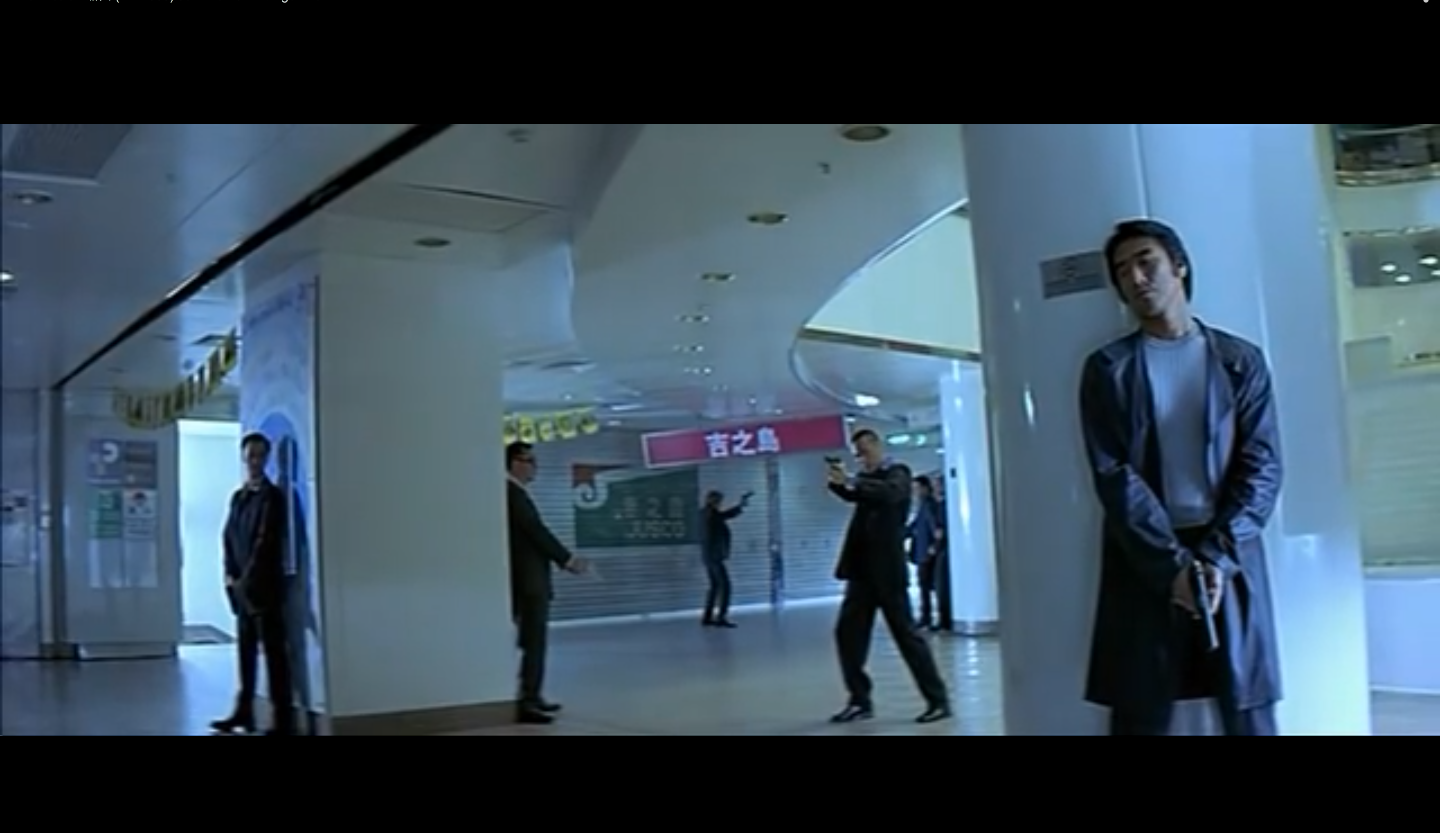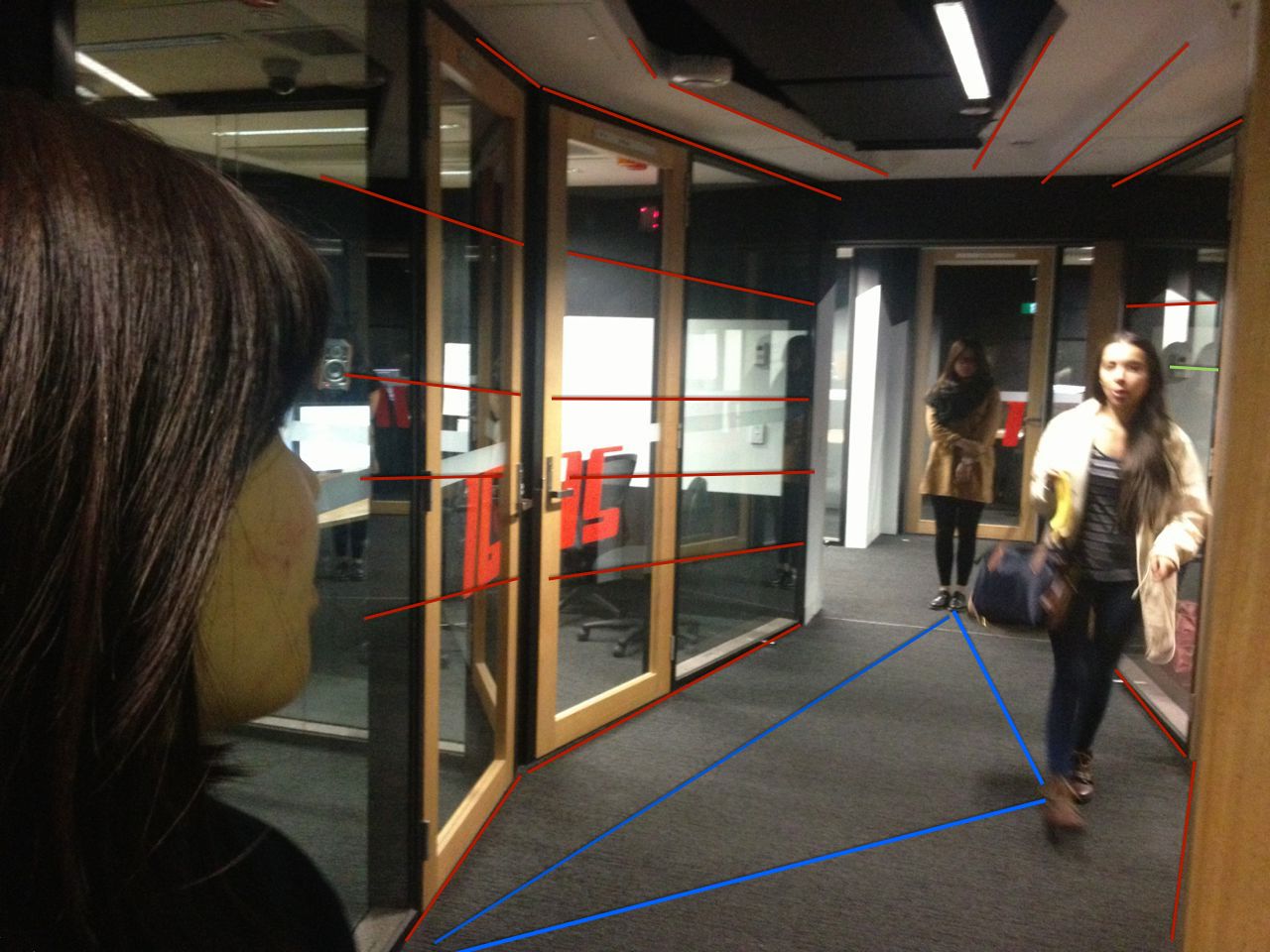My project aims to explore the relationship of the camera, characters and space. This idea is inspired by a famous Hong Kong filmmaker Johnnie To who is famous for manipulating the camera and characters in a particular space. To is able to create an atmosphere that he wants by moving the camera and characters around in the space.
In his very first film, The Mission (1999) is an excellent example to explore how To create a tension in his way of using the camera. ‘The shopping mall scene’ is the most remarkable one throughout the film in which To composes a fantastic scene as he carefully make a plan within the camera, characters and space. The story happens in an off-time emporium where five bodyguards are sending their boss back home. However, someone employs killer to assassinate the boss. Once the first bullet is triggered, the gunfire war starts. At this point, To also begins to build up a tension with his intelligence.
Composition and Character Position

In one of the shots, To has a brilliant mind as he creates an excellent composition. He utilises a wide shot to cover all characters in the shopping mall. To’s space is expandable and 3D rather than flat and gloomy. A dynamic scene, which consists of four layers, is generated by composing all characters in particular spots. Placing one bodyguard with a pistol in the front creates the first layer in the foreground. Four individuals are hiding behind pillars in the middle ground as the second and third layers. The last layer is the farthest one in the background by positioning a character in the center of frame.
The space is so expandable because of the illusion that To creates. The importance of character depends on the size of them. The first character occupies most of space in the frame, in other words, he is the most impressive one because he is the biggest. Other people in the second and third layers looks less noticeable. The furthest one is the least considerable one because of the smallest size. To brilliantly creates a rhythm in the space as the gradual change of character’s size.
Camera Movement

The camera movement gradually builds up a tension in the gunfire scene. It is a combo of dolly shot with which the atmosphere becomes more tense. In fact, To is a director who always moves the camera in his every film. Camera movement is equivalent of Johnnie To’s personal style. Back to the emporium scene, the dolly shot enhances the intensive situation where the bodyguards confront an accidental gunfire war. How does To do that?First of all, he slowly pushes the camera to the characters. Although the characters do not have any body movement, the tracking makes the image dramatic. Secondly, after a few shot of tracking into characters’ face. To cuts to a shot of tracking back that is a wide angle, revealing the unknown space. A serval of tracking in shots are medium close up that shows characters’ expression but audiences do not know where they are in this space. Therefore, the function of tracking out shot tells audience the idea that “what is really going on here?.
For my final project, I decide to do it in Building 9 basement, the editing suite, because I see the depth of this space. I think the reason that To chooses a space like shopping mall is because he also observe the depth as well. The emporium is wide open and deep enough to create dramatic composition. Compare to the mall, editing suite has only one narrow laneway and is a close space rather than open. However, the space is still deep so that I am able to create something there. I consider the narrowness is not a bad thing at all because less factors bother me. Although wide open space could be more creative, I might do not have such a ability like Johnnie To to manipulate everything in the scene.

